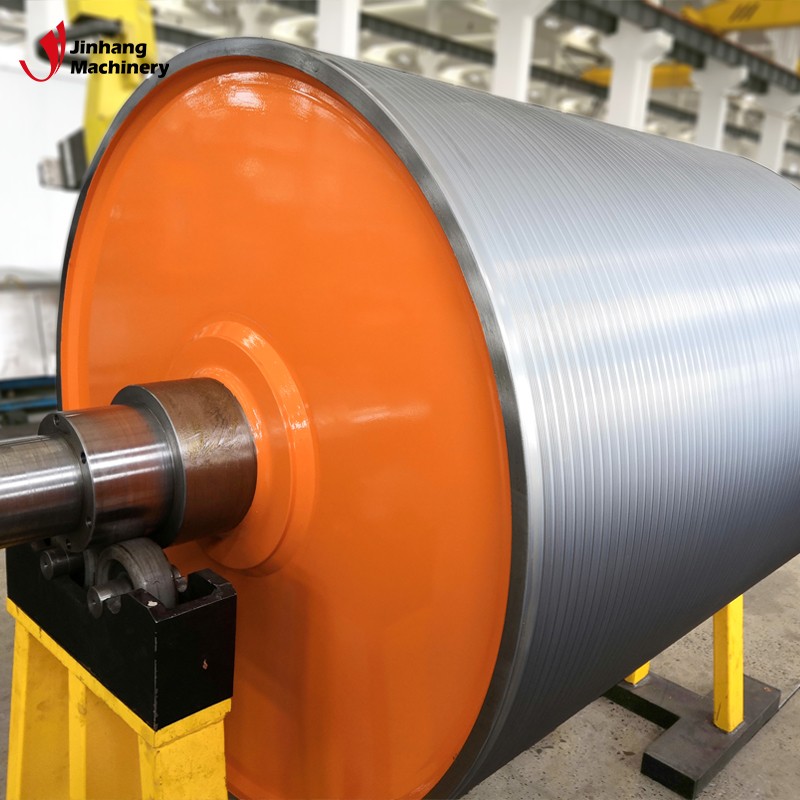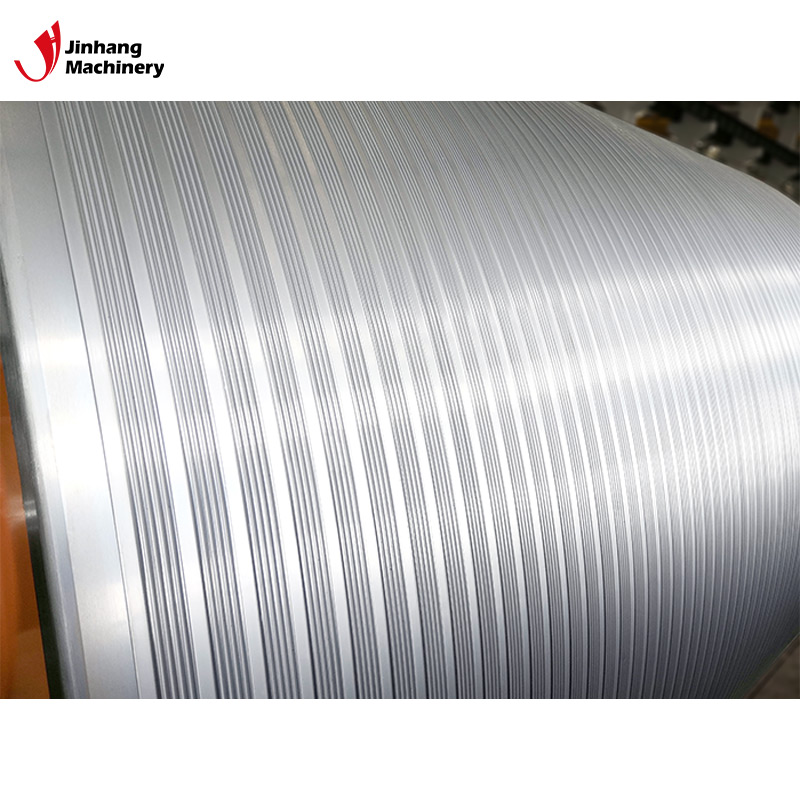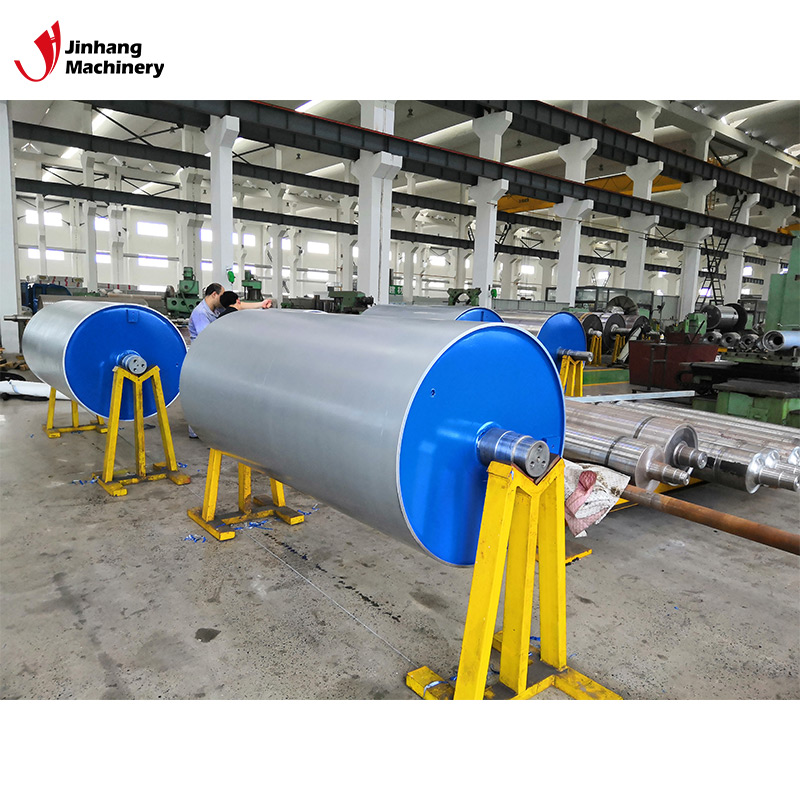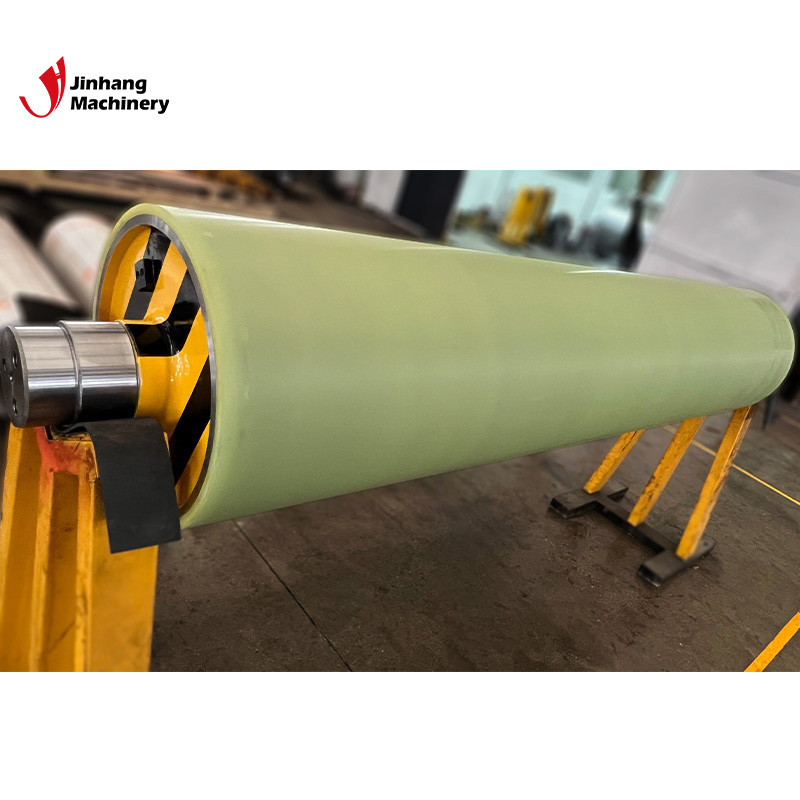Chrome Rollers vs. Rubber Laminated Rollers: What's the Difference?

In the industrial manufacturing process, rollers are an indispensable component and they play a vital role in many links. In order to meet different needs, many types of rollers have appeared on the market, of which chrome rollers and rubber laminated rollers are the most common. They have shown their advantages in different application fields, but for specific users, understanding the difference between the two is the key to choosing the right roller.
This article will explore the difference between chrome plated rollers and rubber laminated rollers in depth, and make a detailed comparison in terms of material properties, application scenarios, performance, and maintenance.
What are the characteristics of chrome rollers?
Materials and Manufacturing Process
The core of chrome plated rollers is usually made of steel or cast iron, while the surface is covered with a uniform layer of chrome through an electroplating process. This chrome layer not only gives the roller a high-strength surface hardness, but also provides excellent corrosion resistance and wear resistance. The electroplating process ensures that the chrome layer is evenly distributed on the roller surface, forming a smooth and durable outer layer.
Performance and Advantages
The main advantage of chrome-plated rollers is their excellent hardness and smoothness, which makes them excellent in high-intensity and high-precision working environments. The following are several performance characteristics of chrome-plated rollers:
● High wear resistance: The chrome layer is extremely hard and can effectively resist wear, suitable for high-load environments with long-term use.
● Excellent corrosion resistance: The chrome layer has strong corrosion resistance to most chemicals, especially in humid or acidic environments.
● Low friction coefficient: The smooth chrome layer reduces friction resistance and improves the transmission efficiency of the roller, which is suitable for occasions requiring high-precision processing.
● Thermal stability: Chrome-plated rollers can withstand high operating temperatures and maintain their physical properties unchanged, suitable for high-temperature working environments.
Application scenarios of chrome-plated rollers
Chrome-plated rollers are widely used in industrial fields that require high precision and high wear resistance, such as:
● Printing industry: used in equipment such as offset printing machines and gravure printing machines to provide precise printing pressure and high-quality printing effects.
● Plastic and rubber processing: used to transfer and press materials during extrusion and calendering to ensure a smooth and flawless surface of the finished product.
● Textile industry: used in the stretching, flattening and other processes of fibers and fabrics to ensure the flatness and uniformity of textiles.

What are the characteristics of rubber lamination rollers?
Materials and manufacturing processes
Rubber lamination rollers consist of a metal core and an outer rubber layer. The metal core is usually made of steel or aluminum, while the outer layer is made of various rubber materials (such as nitrile rubber, neoprene or silicone rubber), depending on the application environment and functional requirements of the roller. The rubber layer is fixed to the metal core by hot pressing or adhesive to form a strong and elastic surface.
Performance and advantages
Rubber lamination rollers are known for their softness and elasticity, and are suitable for applications that are sensitive to surface pressure. Its main performance characteristics include:
● Good elasticity: The rubber layer provides a soft contact surface that can effectively absorb vibration and impact and protect the processed material from damage.
● Strong adaptability: There are many types of rubber materials, and the appropriate rubber type can be selected according to different working environments to meet various needs, such as oil resistance, acid and alkali resistance or high temperature resistance.
● Noise control: The flexible material of rubber can reduce the noise when the equipment is running, which is particularly suitable for use in low-noise environments.
● Higher friction: The rubber surface provides a higher friction coefficient and is suitable for applications that require traction or conveying functions.
Application scenarios of rubber laminated rollers
Rubber laminated rollers are usually used in situations where there are high requirements for the protection of the material surface, such as:
● Printing industry: As a conveyor belt or pressure roller, it protects the printed material from scratches or deformation.
● Paper and film processing: Used in the processing of paper or plastic film to prevent damage caused by friction or compression.
● Wood processing: During the wood pressing and surface treatment process, rubber rollers can protect the wood surface from damage and provide uniform pressure distribution.

Chrome rollers vs. rubber laminated rollers: What is the difference?
Material hardness and surface treatment
The main difference between chrome rollers and rubber laminated rollers is the hardness of the surface material. The surface hardness of chrome plated rollers is very high, which can effectively resist wear and chemical corrosion, and is suitable for environments that require high strength and durability. Rubber laminated rollers are known for their softness and elasticity, and can adapt to applications that are sensitive to surface pressure and prevent damage to the material surface.
Application scenarios and functional requirements
Chrome-plated rollers are usually used in applications that require high precision and high wear resistance, such as printing, plastic processing and textile industries. Rubber laminated rollers are more suitable for situations where the material surface needs to be protected, such as paper processing, printing and wood processing. When choosing a roller, users need to decide which type of roller to use based on the specific application requirements.
Durability and maintenance requirements
Chrome-plated rollers usually have a long service life and low maintenance requirements due to their hardness and wear resistance. They can also maintain good performance in high temperature and corrosive environments. However, the disadvantage of chrome-plated rollers is that when the surface chrome layer is damaged, it is relatively difficult to repair and needs to be re-plated or replaced.
In contrast, although rubber laminated rollers have good elasticity and strong adaptability, the rubber material is easily affected by wear, aging or chemical corrosion, and the service life is relatively short. Rubber rollers need to be inspected and maintained regularly, such as replacing the aging rubber layer or cleaning and maintenance, to ensure their normal operation.
Thermal stability and temperature adaptability
Chrome-plated rollers have good thermal stability and can work for a long time in high temperature environments without affecting their physical properties. Therefore, they perform well in high-temperature processing or heat treatment processes. The thermal stability of rubber-laminated rollers depends on the choice of rubber materials. Some high-temperature environments may cause the rubber layer to soften or decompose, limiting their use in high-temperature applications.
Cost and economy
Chrome-plated rollers are usually relatively expensive due to the complex electroplating process and high material cost. However, due to their durability and low maintenance costs, chrome-plated rollers may be more economical in specific applications in the long run. Rubber-laminated rollers have relatively simple materials and manufacturing processes, low initial costs, but require more maintenance and more frequent replacement, so they may not be as economical as chrome-plated rollers in high-load or high-demand applications.
In summary, chrome-plated rollers are suitable for high-precision, high-load applications due to their high hardness, wear resistance and corrosion resistance, while rubber-laminated rollers are widely used in environments sensitive to surface pressure due to their softness, elasticity and material protection. Choosing the appropriate roller type requires comprehensive consideration of factors such as specific application scenarios, functional requirements, and economy.

